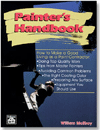“It was all over the ceilings, the walls, everywhere.”
So stated Sean Sands, owner of Rhode Island’s Rattlehead Records, regarding the polyurethane egg-crate-style foam that covered much of the inside of The Station, the West Warwick, R.I., club that burned down on Feb. 20 at a rock music performance by the band Great White. Sands visited the club on many occasions to record, so he knew the interior of The Station.
Lest wall and ceiling contractors doubt their impact on safety, this tragic fire, which claimed 99 lives, is a reminder of just how much this industry’s expertise is necessary in the world.
The fire quickly consumed the club when the band’s pyrotechnics caused the soundproofing foam to ignite.
The American Foam Corp. manufactures the foam, where club owners Michael and Jeffrey Derderian bought 540 square feet of the foam material for $580.75, in June 2000, to insulate the stage after neighbors complained about noise, according to Reuters Newswire. Aram DerManouelian, president of American Foam, alleges that the Derderians could have purchased fire-retardant foam but chose general egg-crate foam used in packaging.
Ironically, two years before the tragedy, Jeff Derderian, in his capacity as reporter for WHDH-TV, in Boston, did a television report on the fire dangers of mattresses—including those that contain polyurethane foam. In his report, according to the Reuters Newswire, Derderian noted that the foam made mattresses a fire danger because of its highly flammable nature. Derderian even stated that fire experts called the foam “solid gasoline.”
The foam used in The Station had a density of 1.2 pounds per cubic foot and each square measured 37 inches by 85 inches, and was 21⁄2 inches thick.
The lesson here is simply for contractors to always be vigilant regarding safety and installations. At risk of flirting with the ambulance-chasing approach, this sad lesson could offer acoustic contractors a business opportunity by soliciting all small club venues that play live music to double check their acoustic and sound-proofing setups. As a musician, I’ve played in my share of small clubs and most do indeed feature some sort of acoustic material on the walls and ceilings. Only an expert can determine the safety of such systems.
Sadly, the safety inspections of The Station failed to notice the foam, therefore failing to notice its flammability. When one considers a small venue and a fire spreading so quickly that it claims 99 lives, it becomes astonishing how flammable this type of foam really is.
Once again, a tragedy is required to alert us to potential dangers perhaps not often considered. Let this lesson remind everyone in the industry to consider the safety of end users with fresh eyes in the future. Too often, we learn too late of tragedy-causing oversights that basic vigilance would reveal. Precious lives should never be lost to oversights and incompetence.



Report Abusive Comment